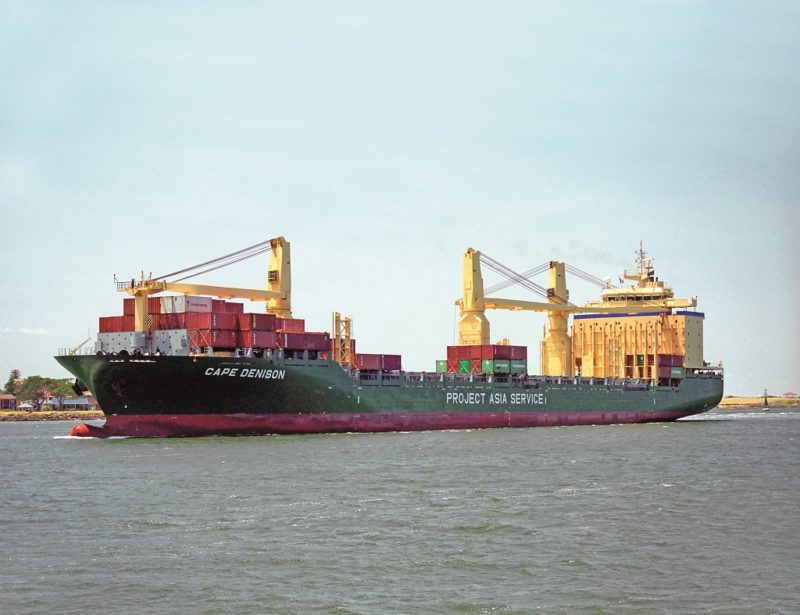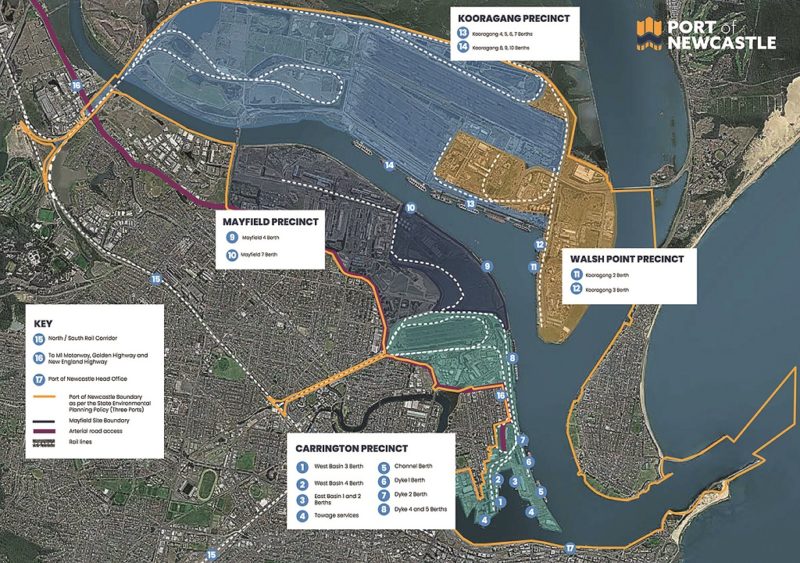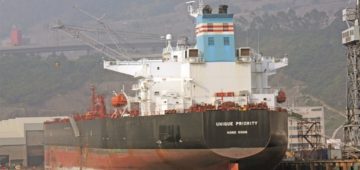
The Port of Newcastle (NSW) is administered by the Port Authority of New South Wales, along with five other ports of Sydney Harbour, Port Botany, Port Kembla, Port of Eden and Port of Yamba. The Port of Newcastle is a vital economic gateway to the mineral resource-rich Hunter Valley, with over 2,200 vessels per year visiting the port and exporting valuable cargo of coal with 163.8 million tonnes exported in 2019/20 representing 90% of throughput, and the remaining 10% of grain, vegetable oils, alumina, fertilisers, ore concentrates and other minerals to markets overseas. The Port Authority of New South Wales handles a giant 212 million tonnes of cargo per year worth $100 billion in trade from 5,940 commercial vessels passing through the six ports.
HISTORY of the PORT of NEWCASTLE
The Hunter River flows through Newcastle with the region traditionally occupied by the Awabakal and Worimi Aboriginal Peoples, who called the area Malubimba. The New South Wales Geographic Names Board has identified eight landmarks around the area with their English and Aboriginal names as follows:-
- Nobbys Head in the approach channel to the Port of Newcastle also known as –
- Whibayganba
- Flagstaff Hill (Tahlbihn)
- Pirate Point (Burrabihngarn)
- Port Hunter (Yohaaba)
- Hunter River South Channel (Coquun)
- Shepherds Hill (Khanterin)
- Ironbark Creek (Toohrnbing)
- Hexham Swamp (Burrahihnbihng)
In September 1797, Lieut. John Shortland became the first European settler to explore the area, with his discovery largely accidental as he had been sent to search for a number of convicts who had seized a locally built ship as she was sailing from Sydney Cove. He entered a large river and named it after John Hunter, the Governor of New South Wales. Coal was found and this was the first export of the new colony of New South Wales.

In 1800, more serious attempts were made to make Newcastle into a sustainable area with coal mining, logging and sawn timber. In 1804, the settlement was named Coal River and then Newcastle, after the most famous coal port in England. Lieut. Charles Menzies was appointed superintendent of the new Newcastle colony and he arrived on 27th March 1804 with three ships in the warship Lady Nelson, and the Resource and James. Many of the coal miners came from the North East of England, and gave their home town names of Stockton, Jesmond, Hexham, Wickham, Wallsend, Gateshead and Morpeth to the new settlements.

Military rule in the new colony ended in 1823, and it began to acquire the aspect of a traditional Australian pioneer settlement, with a steady flow of new settlers arriving. The first railway in Australia opened in 1831 at Newcastle to carry export coal to the wharves. Various schemes were planned to partly dredge the harbour or create an artificial harbour, but by 1911 the New South Wales Government finally considered it was cheaper to deepen the Newcastle harbour entrance than to consider any of the other options. The dredger Latona of 397 grt was built by the Cockatoo State Dockyard in 1911 at Sydney as one of the first of a fleet of twin screw dredgers to be built with names such as Neptune (1923), Hermes (1931), Jupiter (1912), and Tethys (1905) and worked with hoppers Grafton and Lismore built in 1917. The pilot boats at Sydney and Newcastle were Captain Cook of 396 grt built in 1893 and Birubi of 429 grt built in 1927.
A shipping company evolved in December 1891 from the merger of the Newcastle Steamship Company and the Hunter River New Steamship Company to connect the sixty miles distance northwards from Sydney Harbour to Newcastle as the Newcastle and Hunter River Steamship Company. Typical vessels were the fast passenger ships Namoi of 1,416 grt and Newcastle of 1,251 grt built by J. Key & Sons of Kinghorn in 1883/84, and engines ‘midships passenger and cargo ships in the Archer of 633 grt built in 1882 on the Clyde, the twin screw Hunter of 1,840 grt built in 1907 by Ramage & Ferguson of Leith with passenger accommodation for 242, the twin screw Gwydir of 1,848 grt and built in 1911 by D. & W. Henderson on the Clyde, and Kindur of 1,267 grt built in 1928 by the Ayrshire Dockyard Ltd., Mulubinba of 1,262 grt built in 1937 by Henry Robb Ltd. at Leith, Karuah of 1,353 grt built in 1950 by the Whampoa Dockyard Co. Ltd. at Hong Kong with Tyne built triple expansion engines, and the last coaster Edenhope of 584 grt built in 1949 by Walkers Ltd. of Maryborough. Services were discontinued in 1956, funnel colours were red with a black top, below which were a white band and a blue band. This fleet were known as ‘Sixty milers’ with early ships having First Class cabins and lit by the latest wonder of electricity, larger vessels traded to Brisbane and Melbourne.

Subscribe today to read the full article!
Simply click below to subscribe and not only read the full article instantly, but gain unparalleled access to the specialist magazine for shipping enthusiasts.





Comments
Sorry, comments are closed for this item